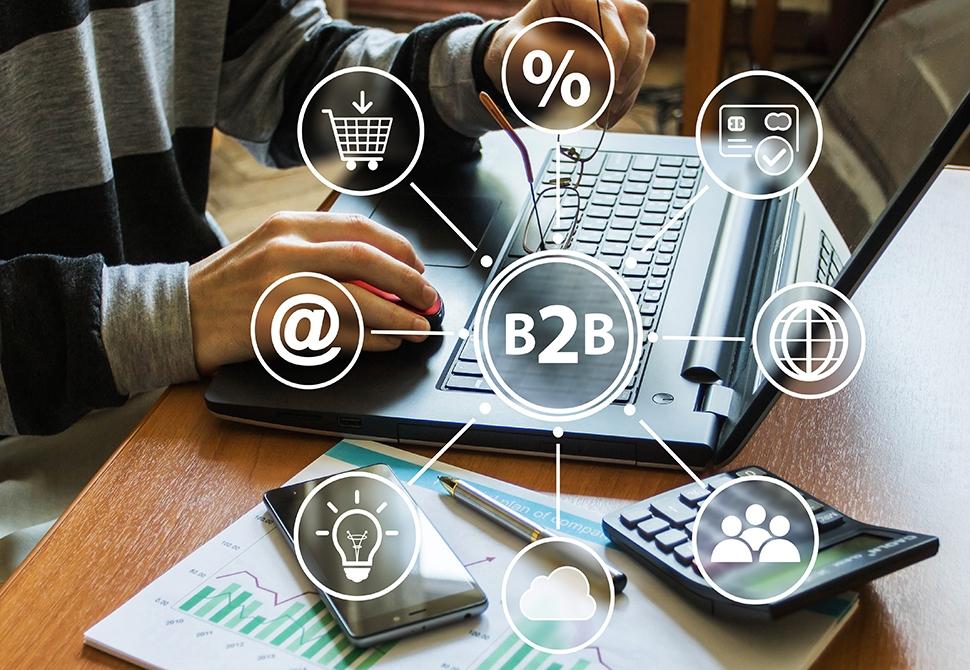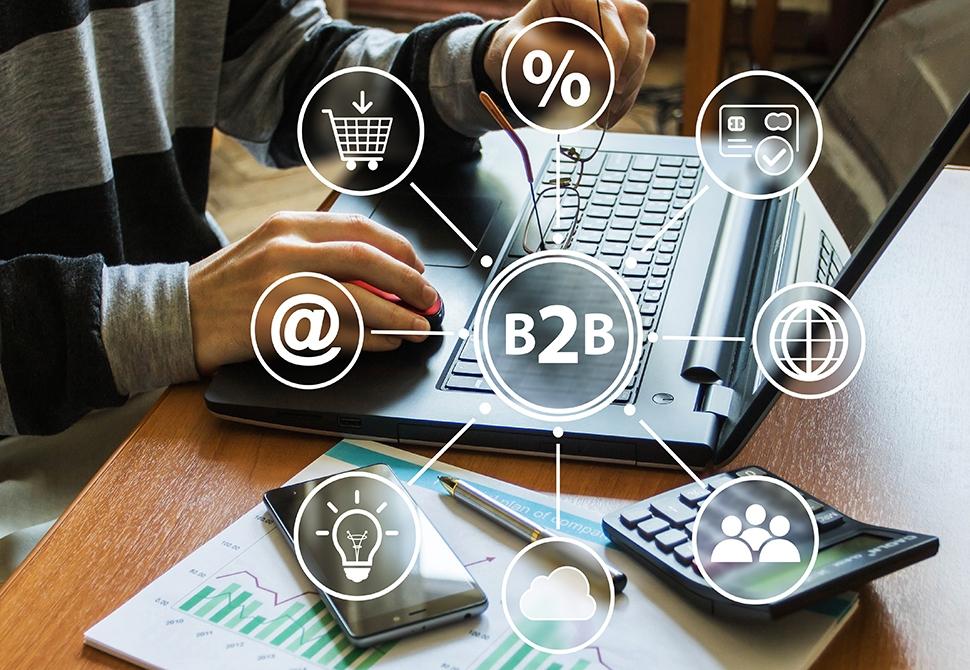How to introduce B2B implementations?

Do you run a commercial activity and want to start it also on the Internet? The interest in launching B2B platforms is increasing. Why is this happening? It turns out that communication via B2B system is becoming the standard in cooperation between companies. It is much faster and more convenient for both sides. What’s more, customers also benefit from this solution. Thanks to the B2B platform you can also maximize the efficiency of your business processes. How to do it? Discover an effective way to implement a B2B system and apply it in your company.

Fight the fear of introducing a B2B platform in your company
Not everyone likes changes, even if they are good. Often, various fears prevent us from making the final decision to implement a shopping platform. For example, fear of failure. The fear that our contractors will not use it at all. And also the fear of incurring large costs of system implementation.
Fortunately, all fears are to be tackled. You can not worry about failure, because with this approach, you will not take any step. Most of the companies operating on the market have many implementations of various IT systems behind them. Some certainly ended in failure. However, one cannot look at new products only through the prism of failures. If you take advantage of the knowledge of professionals, choose the appropriate B2B platform and take care of its correct implementation, you will be assured that the action will be carried out correctly.
However, if you are afraid that your customers will not use the new solution, before making a decision, conduct a thorough analysis of the situation. Check which counterparties you have and which transaction methods suit them best. You can conduct a survey or talk to them at the earliest opportunity.
In turn, the cost of the platform is a risk that you need to decide on. Without a proper budget, you won’t introduce a new solution. In this case, it is also worth carrying out the analysis. Cost-benefit analysis (flow & drip) is best. Also remember that you can use external sources of financing. There are programs that will allow you to lease or take a technology loan. It all depends on your preferences and good knowledge of the subject.
What business benefits can be achieved by introducing a B2B platform?
There are really many benefits of introducing a shopping platform. However, the most important are primarily:
– The ability to automate all business processes. These include shortening the time for receiving orders, automatically changing the status of the order, posting payments received, updating information on inventory).
– Transparency of the purchasing process and the whole way of working in purchasing departments.
– Possibility to introduce customer segmentation – divide them into appropriate categories and personalize their offer.
– Increasing the company’s revenues thanks to the possibility of making online purchases, using various types of promotions, reaching the right groups of recipients.
The effective launch and operation of a B2B system, however, depends on several elements. They must occur throughout the entire process of implementing the solution – from the appearance of the initiative to the completion of the project and its subsequent business development. What belongs to them? Learn the 7 right steps to implement a B2B platform.
Step 1: Business idea and creation of the initial concept of B2B system implementation
Where to get the idea to implement the system? If you are reading this article, it means that you have already thought about it. You don’t have to look far for inspiration. Just observe your competitors’ activities and focus on current market trends to see that a significant proportion of businesses are moving to the online environment. If in doubt, also ask your customers where it is convenient for them to shop. It may also turn out that your employees want to introduce innovative solutions that will facilitate their work.
Regardless of where you finally get the idea, remember that one person should deal with the project from the beginning. He or she should be responsible for contacts with the rest of the team and deal with formal and organizational matters. The implementation team should include employees from various departments. Thanks to this, you will have an interdisciplinary view on the matter and each representative will be able to emphasize what is most important for this type of employees. At the stage of team meetings, a business and technical concept should be created. It does not have to take the shape of a professional document right away. It is important to include the list of expectations of all departments concerned.
Step 2: Performing a pre-implementation analysis
Pre-implementation analysis is a key step for the entire project. After the initial concept preparation stage, the potential contractor of the project should be invited. In the end he will answer for developing the plan and the overall effect of the project. How do you choose the right company to take care of it? After conducting the pre-implementation analysis, based on the documents received, it is worth choosing the right person who will be able to meet the set requirements.
The analysis can be carried out in two ways – standard or extended. The standard method involves conducting several meetings with employees in the form of workshops lasting several hours. The following documents are created through joint action:
– Functional specification – a description of how the platform should operate and what functions it should perform.
– Technical specification – after consulting the IT department, a list of technical requirements is created that the platform must meet. These are usually tips on technology, implementation, database creation and other relevant elements.
– Integration specification – is one of the most important elements. The effectiveness and efficiency of integrated internal systems (ERP, WMS) and external supplier systems depends on it.
– Business process diagrams and models of individual system modules.
– Platform mockups – they illustrate the distribution of information throughout the entire B2B platform.
– Flow & drip analysis – its results will show when the investment in the platform will pay off. All processes in the company are analyzed to identify those that are worth optimizing.
Step 3: Selecting the project contractor
Before you bet on a given contractor, in addition to whether it meets all your requirements, pay attention to how you get along with it. This is very important because the success of any enterprise depends on proper communication.
The competences of the company offering B2B platform implementation services are also important. So pay attention to its portfolio, whether the projects were similar to yours, whether the company copes with complicated activities. It will also make sure that it has the right resources to run several projects at the same time, so that it doesn’t turn out that your waiting time will last forever.
Step 4: Project implementation – implementing the B2B platform
During this stage, the contractor bears the greatest responsibility and most of the work. Ensure regular contacts and meetings. Set deadlines for the implementation of individual stages so that the effects of work are visible. If problems occur during implementation, solve them on a regular basis. This will ensure that you can deal with the uncomfortable issue quickly. It will not affect your further cooperation or the whole effect.
Step 5: Conducting B2B system operation tests
The moment has come to check the created online trading platform. After testing the operation of the system by the contractor, you should receive relevant documents (reports) confirming the tests. After that it is your turn. The first tests with your clients should take place under the watchful eye of the project contractor. Then you test the system yourself. It’s best to do this using 2-3 test clients. It’s good if they are companies you can trust. Thanks to this, you will not have a problem with preparing them for any errors in your new software. By making their first purchases, test customers will go through the entire order processing process. Thanks to this, if any defects appear, they will quickly let you know about them.
Step 6: Production launch of the B2B platform
Now that the tests are over, it’s time to make the final corrections. The system is now ready for official launch, i.e. production launch. Remember to organize training for your key clients. Show them how the platform works and how they can use it. For this purpose, you can send them an email with appropriate instructions or organize an individual meeting. Remember that one of the success factors when introducing a B2B platform is its good presentation. Not only outside, but also inside your company.
Step 7: Maintenance and development of the B2B platform
Launching the platform is just the beginning of success. Now the most important thing is its proper maintenance. You must ensure the proper functioning of the system, which is primarily a trouble-free customer service. Constantly monitor its activities. Listen to your customers if they report any irregularities to you. If you plan to make changes and expand features, do so in advance. The B2B platform implementation project should always be divided into stages. After all, the first version does not have to have all the functions you have set up. Changes should be made in batches, so as not to accuse users of loads of news at once.
Remember that the most important thing when implementing a B2B platform is having a broad perspective. So you have to “get in the shoes” of your employees, customers, suppliers and all other partners with whom you undertake or will cooperate in the future.








